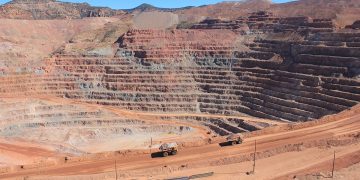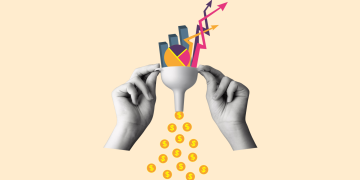Dollar-cost averaging (DCA) has long been hailed as a timeless investment strategy—simple, steady, and psychologically comforting. But in today’s era of whiplash volatility, where stock indexes can swing several percent in a single day and crypto markets rise and fall with social media sentiment, the strategy is under renewed scrutiny. Investors wonder: Is dollar-cost averaging still effective in such a chaotic environment? Does spreading out purchases help or hinder long-term returns when price swings are more violent and frequent?
The answer isn’t binary. While DCA may not always outperform lump-sum investing in strictly mathematical terms, its real power lies in behavioral support, emotional discipline, and long-term habit formation. In high-volatility seasons, where emotional decision-making is the biggest portfolio killer, DCA offers investors a rhythm they can trust. Let’s dive deeper into the pros and cons of the approach in today’s unpredictable markets, and how it performs across different asset classes like equities, crypto, and real estate ETFs.
Pros and Cons of DCA When Markets Swing
In theory, DCA thrives in volatile markets. By investing a fixed amount at regular intervals, you naturally buy more shares when prices are low and fewer when prices are high. This results in a lower average cost per share over time—provided the asset eventually trends upward. In a volatile environment, where asset prices fluctuate without clear direction, DCA turns chaos into opportunity.
One of the clearest benefits of DCA is that it removes timing from the equation. For most retail investors, the inability to perfectly time market bottoms or tops leads to suboptimal entry points. DCA sidesteps this issue entirely by automating entry points over time, reducing the risk of going all-in at the wrong moment.
However, there are trade-offs. In a consistently rising market—especially one rebounding from a sharp correction—lump-sum investing often outperforms DCA. That’s because the average cost of entry under DCA lags behind the accelerating price trend. Moreover, if an asset is in long-term decline (like many speculative crypto coins in 2022–2023), DCA can trap investors into “buying the dip” all the way to the bottom, magnifying losses.
Another concern in high-volatility markets is investor fatigue. When prices swing violently, even disciplined investors can second-guess the process, pause their DCA plans, or overcorrect by altering allocations too frequently. This defeats the purpose of DCA, which is to maintain consistency through all conditions. In short, DCA is powerful in volatile markets, but only for investors with the psychological resilience to stick to the plan.
Behavioral Economics Backing the Method
From a behavioral finance perspective, DCA works because it helps neutralize emotional reactions that derail investment plans. The greatest threats to long-term wealth creation are not market crashes but investor decisions—panic selling, euphoric buying, or analysis paralysis. DCA enforces structure by automating decision-making and reducing emotional load.
This behaviorally driven structure reduces regret. When an investor puts a lump sum into the market and prices immediately fall, the psychological sting can be severe and long-lasting. DCA minimizes the likelihood of buying at the peak and spreads risk across multiple entry points. This “regret minimization” framework is especially useful in bear markets or sideways markets with sharp corrections.
Additionally, DCA encourages long-term thinking. Because it is rooted in consistent contributions, it aligns with the habit-forming benefits of automated saving and investing. Instead of chasing short-term wins, DCA participants focus on contribution schedules and portfolio compounding over time. This mentality is reinforced by platforms that gamify investing, sending regular updates that emphasize progress and discipline rather than daily performance.
Behavioral research also shows that the pain of loss is felt more intensely than the joy of gain—a concept known as loss aversion. By smoothing out entry prices, DCA helps mitigate this cognitive bias. Investors see their average cost adjust gradually rather than experiencing the shock of watching a lump-sum investment fall 15% in a week.
Use Cases in Equities vs. Crypto vs. Real Estate ETFs
DCA strategies aren’t one-size-fits-all. Their effectiveness varies by asset class, risk profile, and liquidity. In equities, DCA remains one of the most practical approaches, especially for passive index investors or those building retirement portfolios over decades. In markets like 2020, 2022, and 2024—each defined by dramatic volatility—investors who deployed DCA into broad indices like the S&P 500 or NASDAQ benefited from both recovery upside and reduced downside anxiety.
In emerging markets equities, where volatility and geopolitical shocks are frequent, DCA can be particularly powerful. It provides exposure to growth potential while minimizing the impact of sharp corrections and currency moves. However, DCA in such regions requires longer investment horizons and careful ETF or fund selection to avoid poor structural plays.
In crypto, the DCA method has developed a cult following. Given the 24/7, emotion-driven nature of digital asset markets, many long-term believers in Bitcoin, Ethereum, and other coins use DCA to avoid FOMO (fear of missing out) and FUD (fear, uncertainty, doubt). During the crypto winters of 2018 and 2022, DCA allowed investors to steadily build positions at depressed levels without the psychological burden of trying to time volatile bottoms.
Still, DCA in crypto carries higher risks. Unlike traditional equities, crypto markets lack mature regulatory frameworks, and certain coins can go to zero. DCA into established coins with proven use cases or long-term adoption narratives makes more sense than applying it to meme tokens or speculative altcoins.

Real estate ETFs provide another viable arena for DCA. With REITs and property-linked funds now accessible through brokerage platforms, investors can use DCA to gain exposure to commercial real estate, data centers, or residential housing sectors. In times of rising interest rates and inflation concerns, DCA into REITs can help smooth the entry point across rate cycles.
However, because REITs are sensitive to macro trends like rate hikes and consumer spending, investors must be aware of the underlying asset mix. DCA into a logistics-focused REIT ETF during a downturn in e-commerce, for instance, may not yield the intended inflation hedge or rental yield. Still, for investors who want real asset exposure without lump-sum risk, DCA offers a defensible approach.
Tools and Apps That Automate Successful DCA Plans
The accessibility of DCA has skyrocketed thanks to the rise of fintech platforms and investment apps designed to automate and personalize the process. Today, nearly every major brokerage and investment app—from Fidelity to Robinhood, from Binance to Coinbase—offers recurring buy features, enabling investors to schedule purchases across multiple assets.
One of the most intuitive tools for DCA is M1 Finance, which allows users to create custom investment “pies” and fund them automatically at set intervals. The ability to assign weights to different ETFs, stocks, or even crypto (via external wallets) gives investors enormous flexibility. Betterment and Wealthfront, two leading robo-advisors, also support automated contributions and portfolio rebalancing based on risk profiles, which amplifies the DCA effect over time.
In the crypto world, apps like Swan Bitcoin, River Financial, and Bitwise offer DCA-centric models that focus exclusively on scheduled crypto purchases. Many allow weekly or daily purchases and provide performance summaries that highlight cost-averaging benefits over time. Coinbase’s recurring buys function makes it easy for retail users to DCA into multiple digital assets, though high fees can eat into returns.
For real estate ETF exposure, traditional platforms like Charles Schwab, Vanguard, and BlackRock offer dividend reinvestment and automated contribution tools that allow for seamless DCA execution. These platforms also provide educational content to help investors understand historical returns, yield sensitivity, and macro trends.
Newer tools like Round, Titan, or Public combine automated investing with social insights and market commentary, enabling users to DCA with added context. These hybrid tools are particularly popular with Gen Z and millennial investors who value transparency, data, and mobile-first usability.
Beyond individual apps, portfolio aggregators like Morningstar, Kubera, and Personal Capital allow investors to track the long-term impact of DCA by showing average cost basis, total return over time, and volatility-adjusted gains. These metrics help validate the strategy, reinforcing the value of staying consistent during turbulent market seasons.
Conclusion
In a world where volatility is the new normal, dollar-cost averaging remains a powerful ally for long-term investors. Its real strength lies not in outperforming market timing strategies, but in minimizing regret, smoothing emotional decision-making, and creating a consistent path to wealth accumulation.
Equities, crypto, and real estate ETFs all offer unique advantages for DCA strategies, especially when supported by modern tools that automate, track, and reinforce discipline. As markets continue to gyrate in response to inflation, geopolitical risk, AI disruption, and shifting interest rates, the ability to invest calmly and methodically will become more valuable than ever.
For those who want to build wealth slowly but surely, dollar-cost averaging—especially when paired with smart asset selection and digital automation—is still one of the most effective strategies in the game.


































